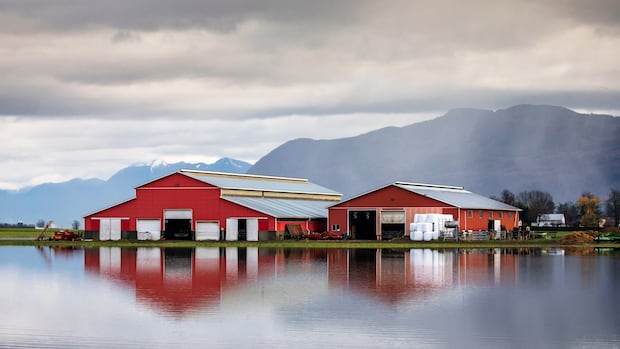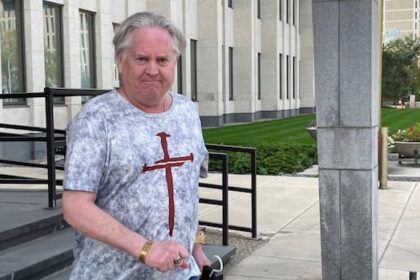British ColumbiaAfter a historic flood devastated the city, Abbotsford’s mayor says the the recovery work is almost complete. But, he says it’s still not ready for the next big flood.Abbotsford’s mayor says hundreds of recovery projects complete, but city not yet flood-proofKier Junos · CBC News · Posted: Nov 22, 2025 10:00 AM EST | Last Updated: 8 hours agoListen to this articleEstimated 5 minutesThe audio version of this article is generated by text-to-speech, a technology based on artificial intelligence.A barn on a farm is pictured surrounded by floodwater in the Sumas Prairie flood zone in Abbotsford, British Columbia on November 29, 2021. (Ben Nelms/CBC)Four years after a historic flood devastated Abbotsford, B.C., the city’s mayor says the bulk of the flood recovery work is complete.In 2021, extremely heavy rain — an atmospheric river — led to the Nooksack River overflowing in Washington state. The floodwater broke dikes, flowed north and drowned the Sumas Prairie, the throne of Abbotsford’s agriculture and a major economic driver for the city.Mayor Ross Siemens said the city had marked 300 flood recovery projects, and the majority of them are finished. This has included repairs to landslide sites, the stabilization of the Sumas River bank, building the first phase of a new flood wall at a critical pump station and removing debris from several waterways. “We’ve got four that are in play, that still need to be done. But we’re coming close to the end of the recovery process,” Siemens said.He said the reasons the work has taken so long includes factors like permitting times and approvals, limited construction windows to protect fish habitats and high costs.“It’s not cheap infrastructure to repair,” he said.Residents in Abbotsford’s Arnold neighbourhood near the U.S. border were among those who evacuated their homes during the 2021 floods. (Kier Junos)Residents in the Arnold neighbourhood, located on the southern part of the Sumas Prairie, said the night they evacuated their homes was unforgettable and traumatic. With so many roads flooded, it was difficult to get out.“We never thought of a flood being like that,” said Albert Brechin, who lives with his wife Rose in a tall house built atop concrete blocks. Their house, built high above the ground in 2017, survived the flood, but many other homes did not.Albert and Rose Brechin sit in the kitchen of their raised home in Abbotsford’s Arnold neighbourhood on Nov. 17, 2025. (Kier Junos)At the time of the flood, George Pedersen was living with his family in a relatively new home, raised 7.5 metres above sea level — just down the road from the Brechins.“We went through the flood, basically got eight feet of water, [it] took out the shop, the house that we were in,” he said.After the flood, they had to completely rebuild. Their new house stands 9.3 metres above sea level.“We went even higher to make sure that we never have a problem,” he said.To live in homes set so high about the ground is somewhat comical, said Rose Brechin. “We make fun, those of us that live in these high houses, that we can wave to each other — like, ‘There’s the white house, they’re way above the trees,’” she said. “So it does look awkward. But it’s definitely what you need in this neighbourhood.”The Pedersens rebuilt their home in Abbotsford’s Arnold neighbourhood higher above the ground after the 2021 floods. (Kier Junos)A top priority for Washington stateSouth of the border, Tom Buroker, director for the Washington state department of ecology, said the state has improved emergency communications with Abbotsford and the province.It has also put a lot of work into understanding the science of flooding, he said. This includes improving modeling and mapping to mitigate the impacts of floods on new infrastructure.Whatcom County is considering levee setbacks on the Nooksack River, Buroker added, likening the idea to widening a bathtub.“It’s the same effect as raising a dike,” he said. “And by setting back a dike further away from the river, you increase the capacity of the river and reduce the chance of flooding.” He said there is no timeline on the project yet, but the state has “committed $4 million every two years to this planning process,” and it’s their “highest priority project.”Not ready for the next big floodSiemens says Abbotsford is still not ready for the next big flood, particularly if it were to cut off Highway 1 in the Sumas Prairie again.Upgrades to that highway are on pause until the completion of a multi-governmental flood strategy.Sumas Prairie main flood zone from the closed section of Highway 1 in Abbotsford on Nov. 21, 2021. (Carly Thomas/CBC)“We’re a vital link to the rest of the country economically through that corridor, we feed all of the natural gas, the oil — all of those natural products are coming through there,” Siemens said.“I don’t think anybody at the federal level really fully comprehends how important the Fraser Valley is to the national economy and national security.”Gregor Robertson, federal minister of housing and infrastructure, wasn’t available for an interview.In an emailed statement, Housing, Infrastructure and Communities Canada said a $6 billion fund will support local infrastructure upgrades over the next decade across the country, but it didn’t make any specific promises for Abbotsford.“Further details, including specific funding commitments, will be available in due course,” it said.ABOUT THE AUTHORKier is an award-winning journalist reporting from CBC’s Fraser Valley bureau in Abbotsford.
Four years after catastrophic floods, Abbotsford, B.C., is nearing end of recovery work











